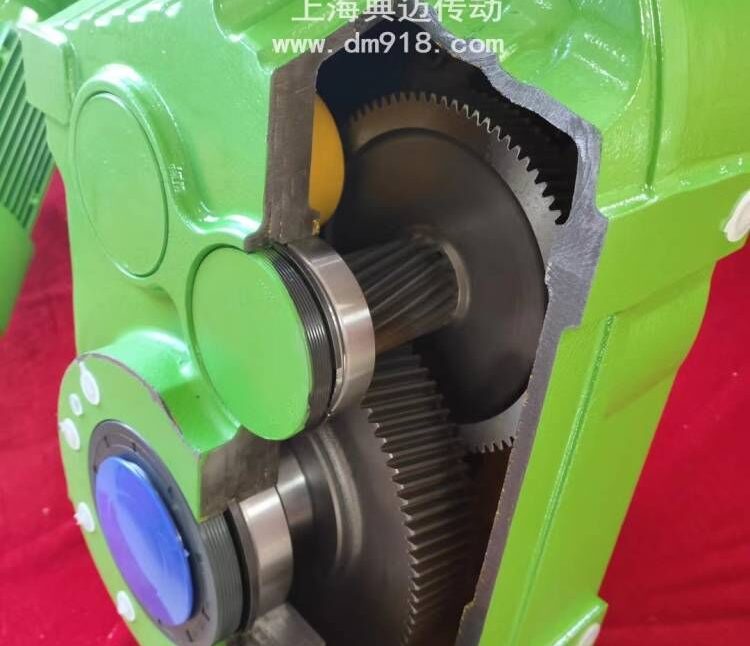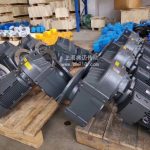The internal structure of the F series parallel shaft helical gear reducer usually mainly consists of the following parts:
Input shaft and output shaft: Used for transmitting power.
Helical gears: These are the key components for the reducer to achieve speed reduction and torque increase. The small helical gear on the input shaft meshes with the larger helical gear on the output shaft. The tooth profile of the helical gears is inclined at a certain angle. The characteristic is that during the meshing process, the contact of the teeth gradually transitions from one end to the other, which enables a smoother transmission and reduces shock and vibration.
Gears are usually made of high-quality alloy steel and undergo surface carburizing, quenching and hardening treatment, as well as grinding finishing, to increase their hardness, wear resistance and transmission accuracy.
Housing: Generally, a high-rigidity cast iron housing with ribs is adopted, which is used to support and protect the internal gears and other components. It provides a stable working environment for the meshing of gears and helps with heat dissipation.
Bearings: Used to support and position the gear shafts, reduce friction and wear, and ensure the smooth operation of the shafts.
Oil seals: Used to prevent lubricating oil leakage and to stop external dust, impurities, etc. from entering the reducer.
In the specific internal structure, it may vary depending on the number of stages of the reducer (such as two-stage or three-stage reducer). The more the number of stages, the relatively more complex the internal gear combination to achieve a larger reduction ratio. For example, in a two-stage reducer, there may be two sets of mutually meshing helical gears; while in a three-stage reducer, there may be three sets of helical gears transmitting successively. In addition, different manufacturers may have differences in details to meet specific performance and application requirements.
But overall, the internal structure design of the F series parallel shaft helical gear reducer aims to convert the high-speed rotation of the input shaft into the low-speed and high-torque output of the output shaft through precise gear meshing, while ensuring the smoothness, reliability and efficiency of the transmission to meet the application requirements in various industrial fields.




